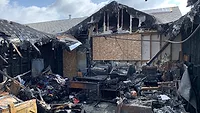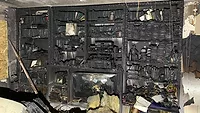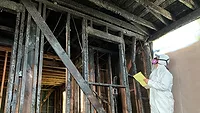Mastering Fire Restoration Estimation Part 1
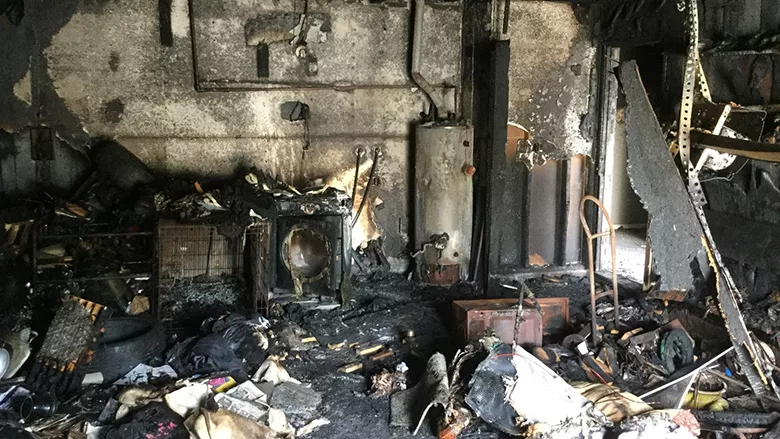
Photo courtesy of Sean Scott
In this series, I am going to share some valuable tips that will help fire restoration practitioners improve their estimating skills and have a better understanding of fire restoration processes so these types of projects can become more profitable and less intimidating.
If there is one area where estimators in the restoration industry tend to have the most difficulty, it’s estimating fire and smoke damage restoration. Having been in the restoration and construction industry for over 43 years, I can’t even count how many times I have heard “full service” restoration contractors say that they don’t do fire work or even want to get involved with fires. This may be due in part because they don’t get the opportunity to do fire restoration projects enough and therefore lack the experience, they had a failed smoke odor remediation job come back to bite them, or when they did get a fire, they couldn’t seem to make it profitable. Whatever the case may be, one thing is for sure, writing an accurate and profitable estimate on a fire loss can be very challenging, especially if you don’t have a strong background in fire restoration and a good working knowledge of general construction. The good news is that fire restoration can be very profitable if you know what to do and can think outside the box.
“Fire restoration can be very profitable if you know what to do and can think outside the box.”
Not all fire losses are complicated to estimate. Structures that are burned completely down or those considered total losses are typically far easier to estimate. These jobs are similar to new construction projects and don’t require any of the fire restoration or smoke remediation elements (except maybe when concrete is affected). In these situations, once you have a set of plans, estimators can utilize subcontractors to provide bids on the major trades such as framing, HVAC, electrical, plumbing, roofing, etc. and then you can use your estimating software to handle the finishes and general items.
Fire restoration projects involve a few distinct phases. These include:
- Emergency services (board-ups, water mitigation, temporary fencing, restoring utilities, etc.)
- Pre-cleaning mitigation (corrosion mitigation, structure and fixture wipe down, etc.)
- Contents pack out and total loss inventory
- Demolition & debris removal (removal of total loss contents and damaged building materials)
- Smoke odor remediation (media blasting, structure cleaning, air filtration, deodorization, encapsulation, etc.)
- Clearance testing (air and surface sampling to verify smoke odor remediation processes were successful)
- Structural engineering, plans, and permitting process
- Reconstruction
Phase 1: Emergency Services (EMS)
The moment the fire department leaves the scene of a fire, the first thing that is typically needed is emergency services. This may include boarding up windows, doors or holes in the roof; capping off leaking water lines; shoring damaged walls, floors or ceiling; setting up containments; cleaning up debris, and so forth. The key to getting compensated for your services lies in the depth of detail and documentation you provide. This includes keeping accurate daily logs of each worker from the time it takes them to travel to and from the job site, time spent on the job, what tasks were performed on the job and what equipment and materials were used. This may also include doing a Matterport scan of the loss, taking photos, and itemizing in detail what personal property needed to be packed out and why.
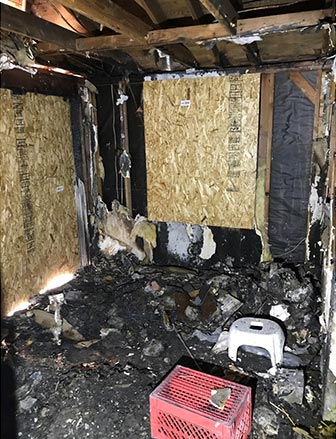
One of the biggest mistakes a restoration contractor can make is turning in an estimate or bill for services that doesn’t have any supporting documentation. This only leads to the adjuster becoming frustrated and ultimately your bill being rejected or significantly reduced.
Let’s dive in and look at writing the scope of work for the EMS phase of a fire loss. First, you want to format your estimate in such a fashion that makes it easy for everyone to read, understand, and justify. Start with the heading in your estimate that says “EMERGENCY SERVICES”. Then put in sequence the events and/or tasks you performed each day. For example, the first item may be an emergency service call. Write a sub-heading under “EMERGENCY SERVICES” that states the date and time of initial contact, then put a note under it that explains “The fire department dispatch requested a board-up at 10:35 PM on 9/18/22” This language explains the need for a service call after hours to protect the property.
Here are a few line items that may be used for a fire EMS invoice or estimate:
EMERGENCY SERVICES
Emergency services performed on 9/18/22
1) Emergency service call after hours (1 ea.)
The fire department dispatcher requested a board-up at 10:35 PM on 9/18/22
2) Travel time to and from the jobsite (per worker) (4 hours)
4 men .5 hr. to and .5 hour from loss site (total time 4 hours)
3) Carpentry labor (per worker) (15 hours)
3 men 5 hours to board up windows, doors, and cover roof
4) Residential supervisor (5 hours)
1 working supervisor 5 hours to coordinate workers, maintain safety, document loss, etc.
5) ½” OSB plywood (320 sf.)
10 sheets of 4x8 plywood were used to board up windows, doors, and cover roof opening
6) 2x4x8’ Douglas Fir Lumber (20 ea.)
20-2x4x8’ sticks were used to provide backing to bolt plywood through doors and window openings
7) Roof tarp 20x20 (1 ea.)
This tarp was used to cover the roof in order to prevent rain from entering the home.
8) All-purpose sandbags (16 ea.)
These were used to hold the tarp down and keep the wind from blowing the tarp off the roof
9) Personal protective equipment (4 sets)
Includes new P-100 respirator cartridges (8), Tyvek suits (4), gloves (4) pair, safety goggles (4) shoe covers (4)
10) Portable generator 1-day minimum charge (includes fuel)
This was used for lighting, saws, and drills
11) Plastic contractor debris bag (20 ea.)
These were used to clean up the glass and insulation strewn on the front driveway and sidewalk.
12) Haul debris per pick-up truck load (1)
This was done to dispose of the debris bags
13) Plumbing emergency service call (1 ea.)
This was for a service call to have a plumber cap leaking lines and disconnect the water heater.
Read More in This Series
14) Electrician emergency service call (1 ea.)
This was needed to disconnect circuits where wiring was damaged and isolate circuits.
Taking the extra time to thoroughly document everything that you do, the materials and equipment you used, and the vendors that provided services will make it a lot easier for the adjuster to understand what needed to be done. Not only will this help you get paid for your services, but it will also help you get paid faster.Looking for a reprint of this article?
From high-res PDFs to custom plaques, order your copy today!




